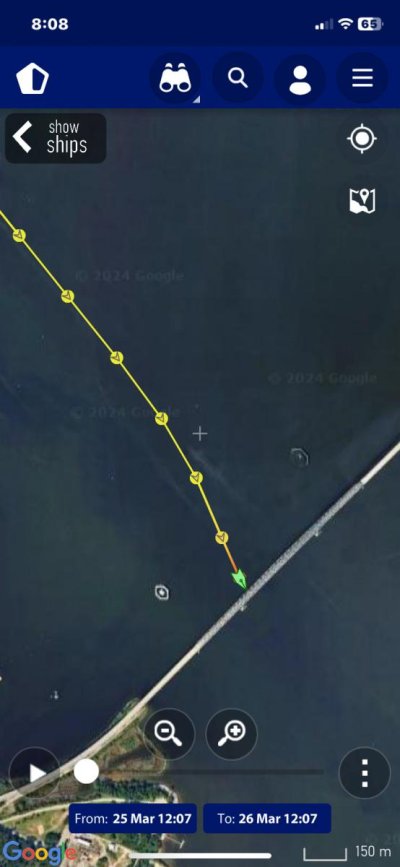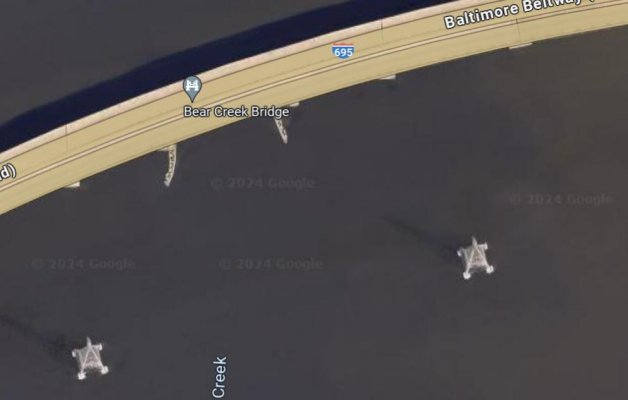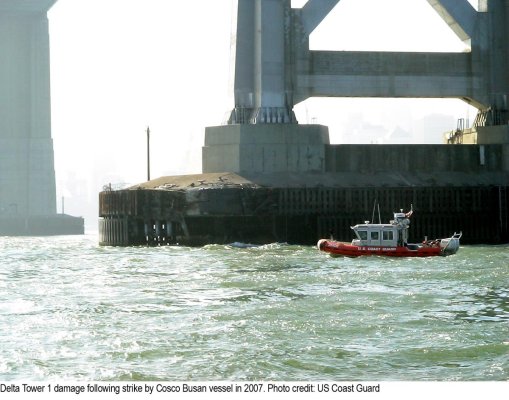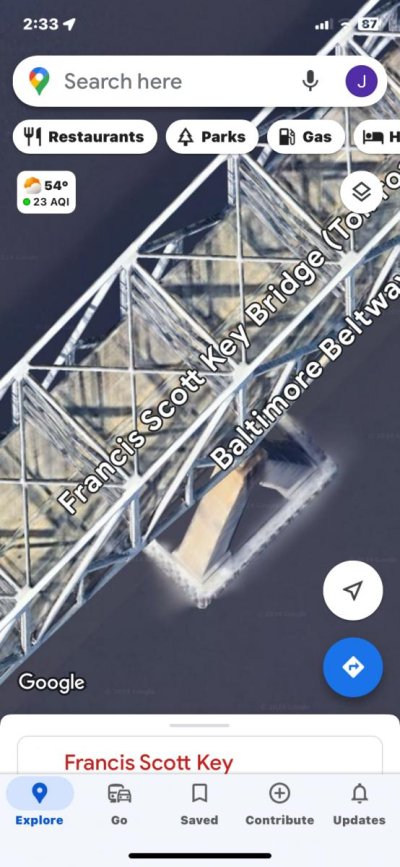CharlieO.
Guru
- Joined
- Sep 21, 2020
- Messages
- 1,558
- Location
- Lake Champlain Vermont, USA
- Vessel Name
- Luna C.
- Vessel Make
- 1977 Marine Trader 34DC
https://www.msn.com/en-us/news/other/ship-strikes-baltimore-bridge-causing-collapse/ar-BB1kxKlI
Wow!!
Possibly workers and vehicles on the bridge.
Wow!!
Possibly workers and vehicles on the bridge.
Last edited:




